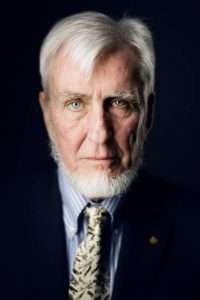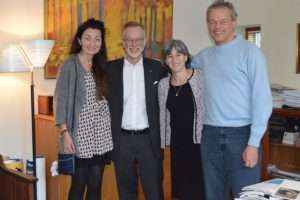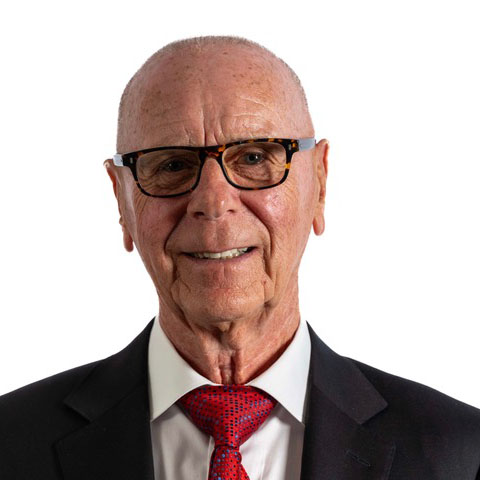 “Our inner GPS”
“Our inner GPS”
The Nobel Prize in Physiology or Medicine 2014 was divided, one half awarded to John O’Keefe, the other half jointly to May-Britt Moser and Edvard I. Moser “for their discoveries of cells that constitute a positioning system in the brain”,popularly called our inner GPS. The discovery is a positioning system that makes it possible for us to orient ourselves in space, demonstrating a cellular basis for higher cognitive function.
Picture:Laureates May-Britt and Edvard Moser, Norway, flank Göran Hansson and professor Juleen Zierat,then Secretary and Chairman of the Committee respectively. ©The Nobel Committee for Physiology or Medicine. Photo Ann-Mari Dumanski.
“Our inner GPS”
In 1971, John O´Keefe discovered the first component of this system. More than three decades later, in 2005, May.Britt and Edvard Moser discovered another key component of the brains positioning system.
Together they have solved a problem that has occupied philosophers and scientists for centuries – how the brain creates a map of the space surrounding us and how can we navigate our way through a complex environment.
London taxicab drivers
In his Nobel Lecture “Spatial Cells in the Hippocampal Formations” John O’Keefe refers to a study by Maguire and colleagues showing that London taxicab drivers had a larger posterior hippocampus than controls and that this increase in size was directly related to the amount of time as a cab driver. This showing that the important factor was the experience of London’s complicated street patterns and that London cab drivers are probably not born with bigger hippocampi but develop them.
Sources and more info: https://www.nobelprize.org/prizes/medicine/2014/press-release/, https://www.nobelprize.org/uploads/2018/06/okeefe-lecture.pdf

Picture:John O’Keefe, USA. © Nobel Media AB. Photo: A. Mahmoud

 “Our inner GPS”
“Our inner GPS”







